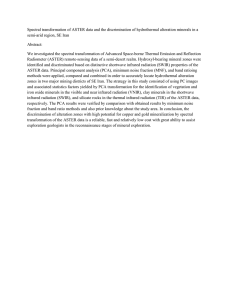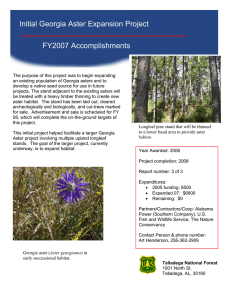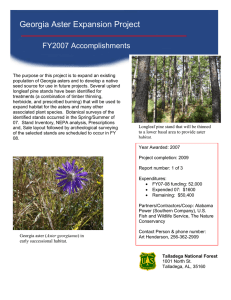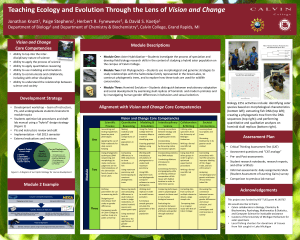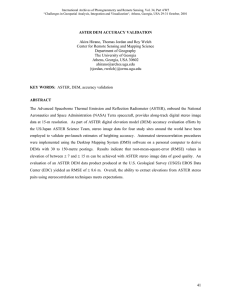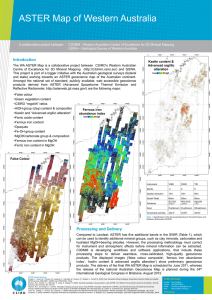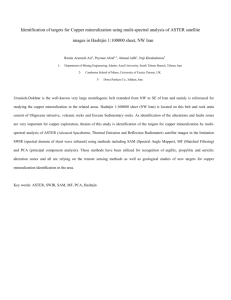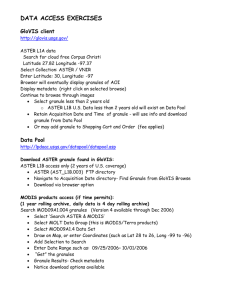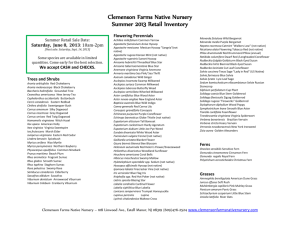Geologic mapping in arid regions with ASTER data
advertisement
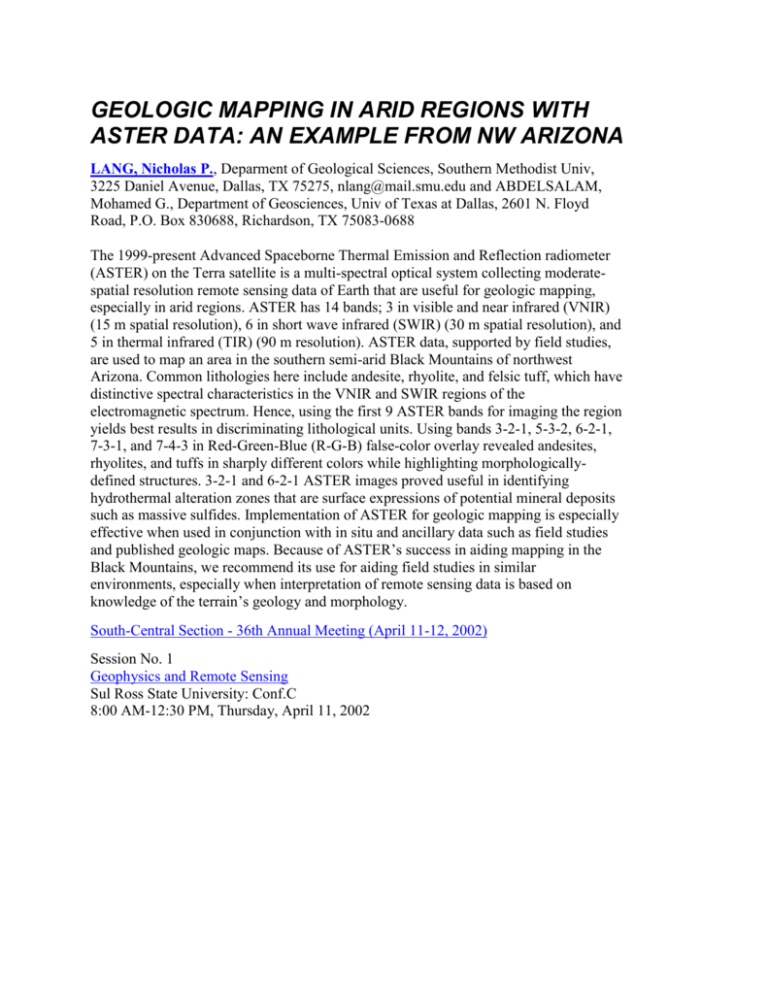
GEOLOGIC MAPPING IN ARID REGIONS WITH ASTER DATA: AN EXAMPLE FROM NW ARIZONA LANG, Nicholas P., Deparment of Geological Sciences, Southern Methodist Univ, 3225 Daniel Avenue, Dallas, TX 75275, nlang@mail.smu.edu and ABDELSALAM, Mohamed G., Department of Geosciences, Univ of Texas at Dallas, 2601 N. Floyd Road, P.O. Box 830688, Richardson, TX 75083-0688 The 1999-present Advanced Spaceborne Thermal Emission and Reflection radiometer (ASTER) on the Terra satellite is a multi-spectral optical system collecting moderatespatial resolution remote sensing data of Earth that are useful for geologic mapping, especially in arid regions. ASTER has 14 bands; 3 in visible and near infrared (VNIR) (15 m spatial resolution), 6 in short wave infrared (SWIR) (30 m spatial resolution), and 5 in thermal infrared (TIR) (90 m resolution). ASTER data, supported by field studies, are used to map an area in the southern semi-arid Black Mountains of northwest Arizona. Common lithologies here include andesite, rhyolite, and felsic tuff, which have distinctive spectral characteristics in the VNIR and SWIR regions of the electromagnetic spectrum. Hence, using the first 9 ASTER bands for imaging the region yields best results in discriminating lithological units. Using bands 3-2-1, 5-3-2, 6-2-1, 7-3-1, and 7-4-3 in Red-Green-Blue (R-G-B) false-color overlay revealed andesites, rhyolites, and tuffs in sharply different colors while highlighting morphologicallydefined structures. 3-2-1 and 6-2-1 ASTER images proved useful in identifying hydrothermal alteration zones that are surface expressions of potential mineral deposits such as massive sulfides. Implementation of ASTER for geologic mapping is especially effective when used in conjunction with in situ and ancillary data such as field studies and published geologic maps. Because of ASTER’s success in aiding mapping in the Black Mountains, we recommend its use for aiding field studies in similar environments, especially when interpretation of remote sensing data is based on knowledge of the terrain’s geology and morphology. South-Central Section - 36th Annual Meeting (April 11-12, 2002) Session No. 1 Geophysics and Remote Sensing Sul Ross State University: Conf.C 8:00 AM-12:30 PM, Thursday, April 11, 2002
